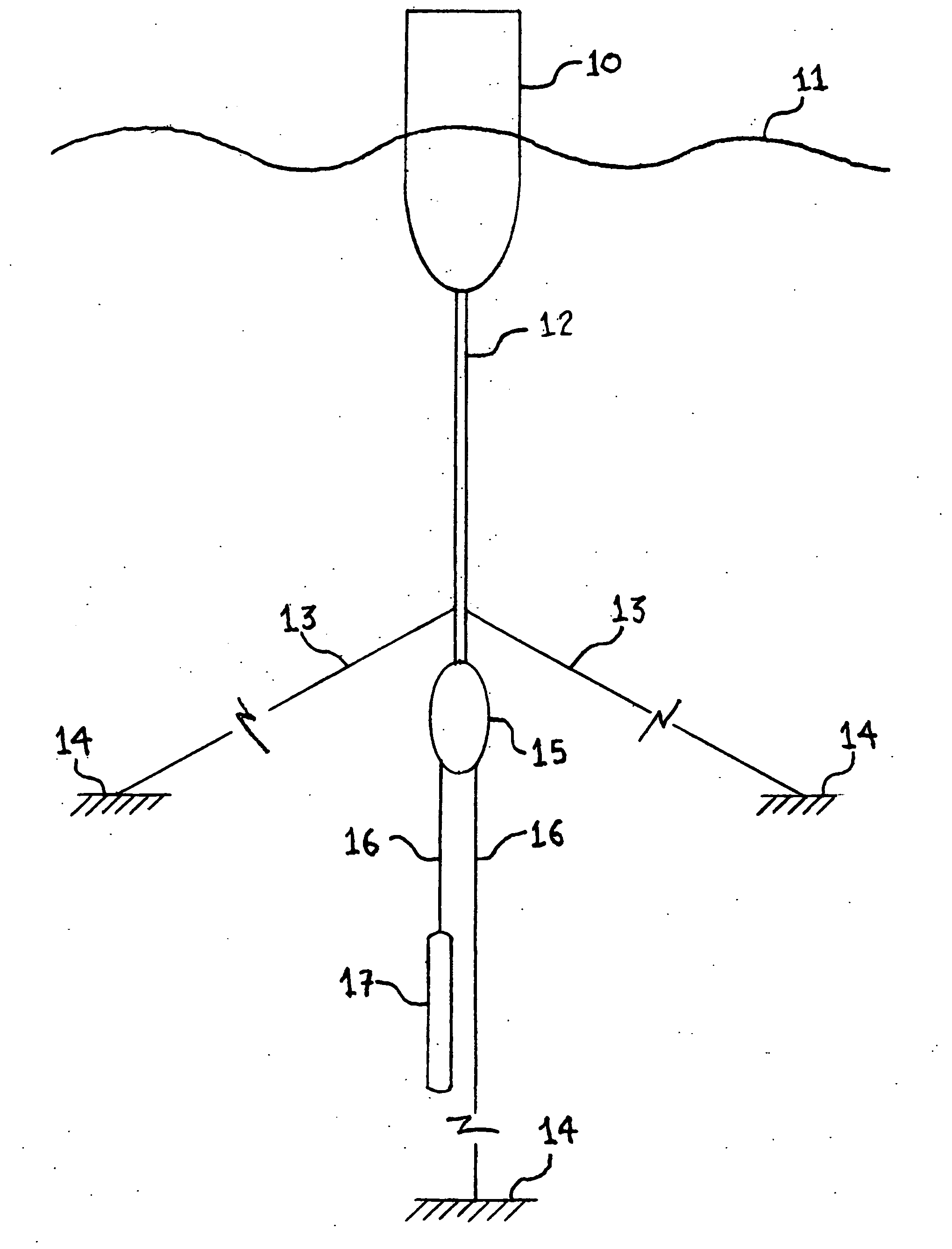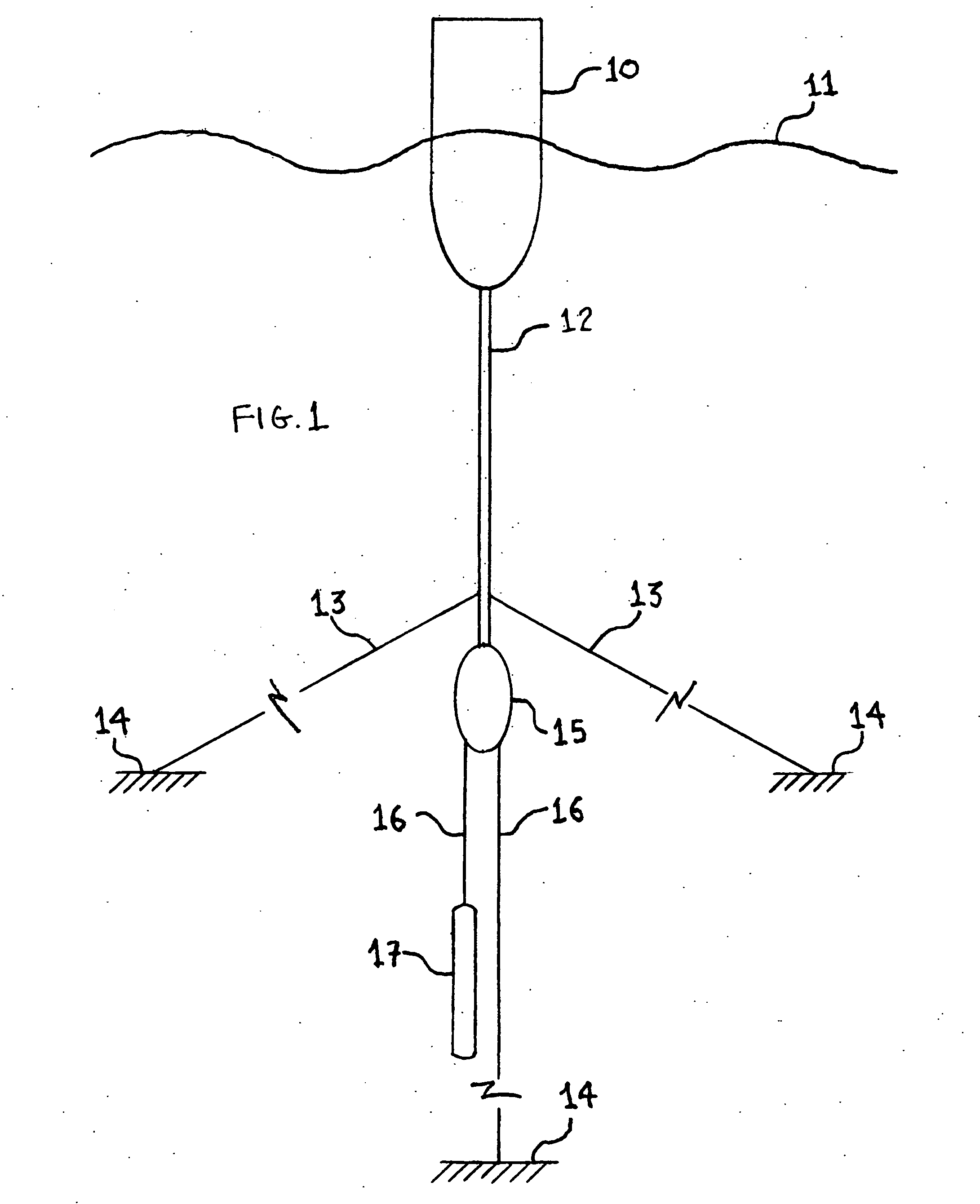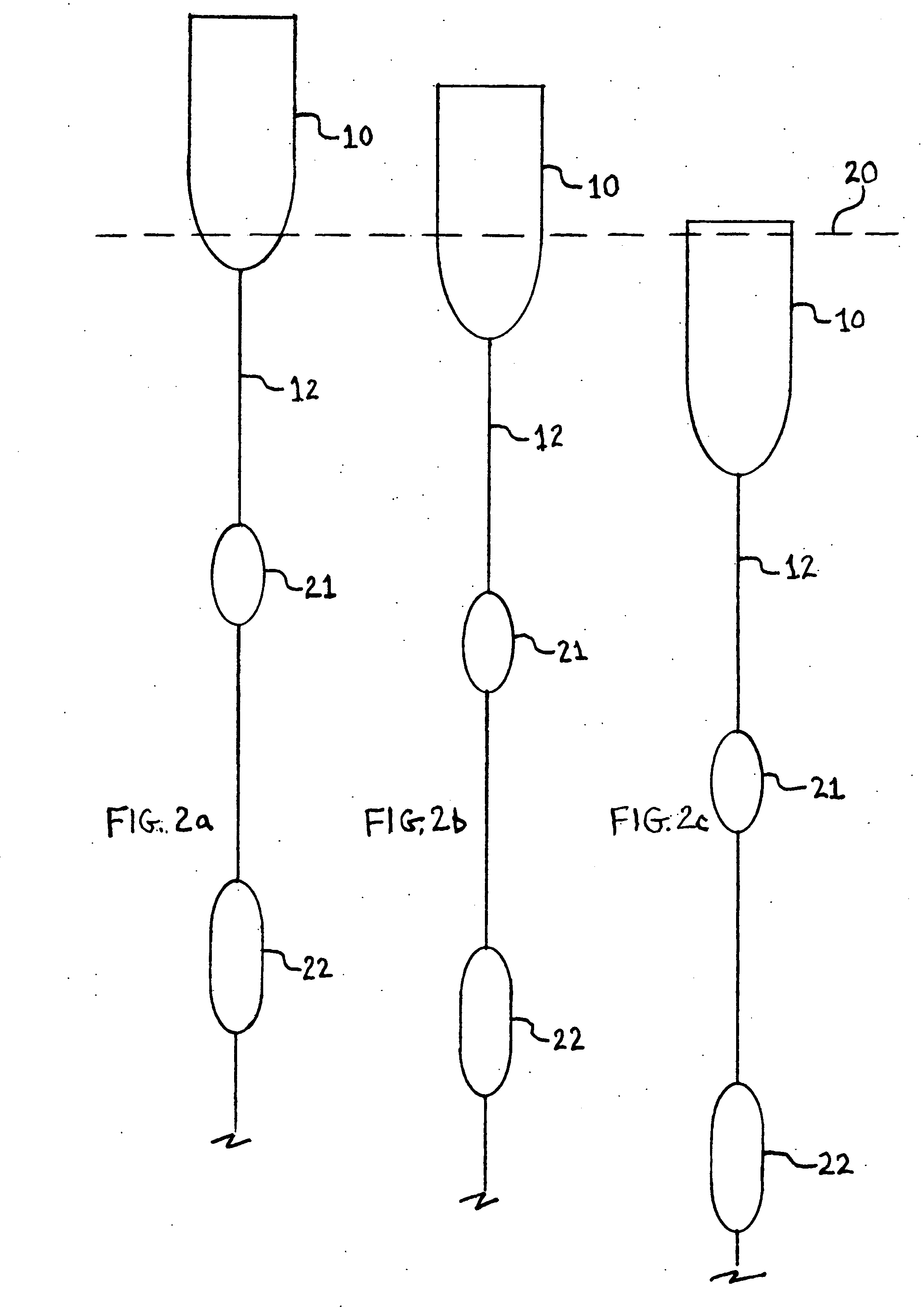Dynamic Tuning for Wave Energy Conversion
a wave energy conversion and dynamic tuning technology, applied in the direction of sea energy generation, engine control, buoyancy control, etc., can solve the problems of not considering the effect of added mass, unable to adjust to long periods, and the pendulum is of conventional design
- Summary
- Abstract
- Description
- Claims
- Application Information
AI Technical Summary
Benefits of technology
Problems solved by technology
Method used
Image
Examples
Embodiment Construction
[0190]FIG. 1: side view of a heaving body with oscillating shaft generator
[0191]A LAM heaving body (10) floats in a swell (11). The bottom of the body (10) at the vertical axis is fixed to a rigid vertical rod (12). Connected to the rod (12) are at least three slack mooring lines (two are shown: 13) arranged at equal radial angles (not shown). The lines (13) are fixed to the seabed (14). Fixed to the bottom of the rod (12) is a LAM pod (15) containing an OSG (not shown). The OSG is driven by a cable (16) that loops round a wheel (not shown) on the OSG shaft (not shown). The cable is fixed to the seabed (14) at one end and to a counterweight (17) at the other end.
[0192]The mooring arrangement permits the body (10) to heave. As it does so the cable (16) reciprocates and the OSG generates electrical power.
[0193]FIGS. 2a to 2c: side views of a heaving body that is tuned by locking and unlocking masses.
[0194]FIG. 2a: a LAM heaving body (10) rides substantially above the waterline (20). T...
PUM
 Login to View More
Login to View More Abstract
Description
Claims
Application Information
 Login to View More
Login to View More - R&D
- Intellectual Property
- Life Sciences
- Materials
- Tech Scout
- Unparalleled Data Quality
- Higher Quality Content
- 60% Fewer Hallucinations
Browse by: Latest US Patents, China's latest patents, Technical Efficacy Thesaurus, Application Domain, Technology Topic, Popular Technical Reports.
© 2025 PatSnap. All rights reserved.Legal|Privacy policy|Modern Slavery Act Transparency Statement|Sitemap|About US| Contact US: help@patsnap.com



